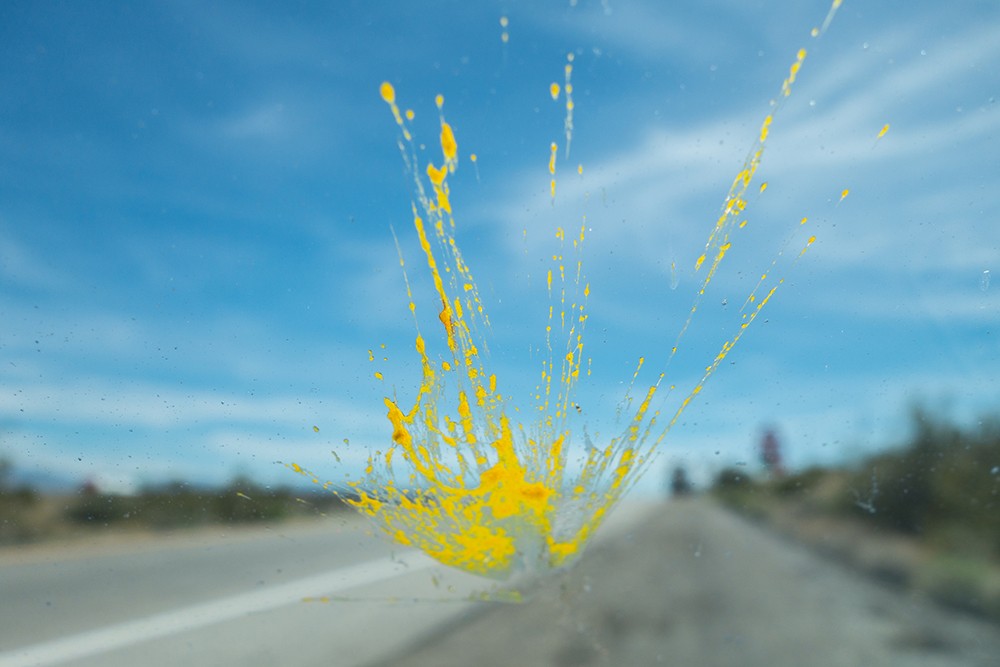Don’t Let Pesky Bugs Make A Sticky Mess Of Your Ride

When you set out on this last adventure of the summer, don’t forget some of the things you might encounter that are not so pleasant: Insects splattered all over the front of your car, tar from that last minute road work you might drive through, and sap from trees you might inadvertently park under while admiring the beauty around you.
Although most people think of late summer as a cooler season, the heat caused by the sun will bake anything that lands on your car, so try to remove the bugs, tar or sap as soon as possible to keep them from bonding onto the surface.
Everyone has encountered bug goo on their windshields, front bumpers and in general any part of the front of the car, truck or SUV that insects might hit as you drive down the road.
Insects such flies and grasshoppers, butterflies, moths and other insects can strike your vehicle at speeds higher than 40 mph, according to car care manufacturer Avalon King.
Insect goo is one of the most frequent types of contamination on your vehicle as well as some of the most difficult to remove. The sticky substance is acidic and can do damage to your car’s paint job.
Bug goo affects the integrity of your paint and can etch through the finish if not properly removed. Use a microfiber towel to clean the car after you have applied the cleaner to help prevent scratching and marring of your car surface.
Look for biodegradable cleaners intended for vehicles. These products are gentle on car paint and help remove adhesives, asphalt, wax grease, rubber marks, oil, scuff marks, tree sap, tar as well as bug goo.
Also, be sure to rinse the area you have cleaned because bug and tar removers are strong enough to strip the wax and sealant off your car. Also wash the vehicle after cleaning it and then use wax or a paint sealant to protect the paint and make bug removal easier the next time.
Here are ways of getting rid of the bugs during and after you return from your next road trip:
- Fill your windshield wash reservoir with bug remover washer fluid.
- Improve visibility for you and other drivers by removing insect goo from headlights and all other exterior lights.
- Be proactive and apply a couple coats of wax before you leave on your trip, which will help you remove most things that latch onto your car while you are gone.
- Remove the bug spatter as soon as possible because the longer it remains on the car, the harder it is going to be to get off and potentially damage painted surfaces.
- Use a bug and tar remover intended specifically for vehicles. Make sure to follow product guidelines and use a microfiber towel to wipe down the surface. For ease of application, look for bug sponge made of microfiber mesh–easy to use while traveling away from home.
- Use a clay mitt or clay bar to remove hardened bug goo and other contaminants embedded in the surface of your vehicle.
- Don’t use hand soap, dish soap, dishwashing detergent or glass cleaner to try to remove bugs, tar or sap on the vehicle’s surface. They can permanently damage vehicle painted surfaces.
- To remove insect parts from glass surfaces, use a cleaner designed for automobile glass. Cleaning window surfaces, headlights and the back-up camera is a safety measure that improves visibility and helps prevent glare.
- Consider using a pressure washer at an automated car wash to remove bug goo, especially if you are traveling. The longer you leave contaminants on the surface of your vehicle, the greater the chance of permanent damage to painted surfaces–stains, etching and scratches.